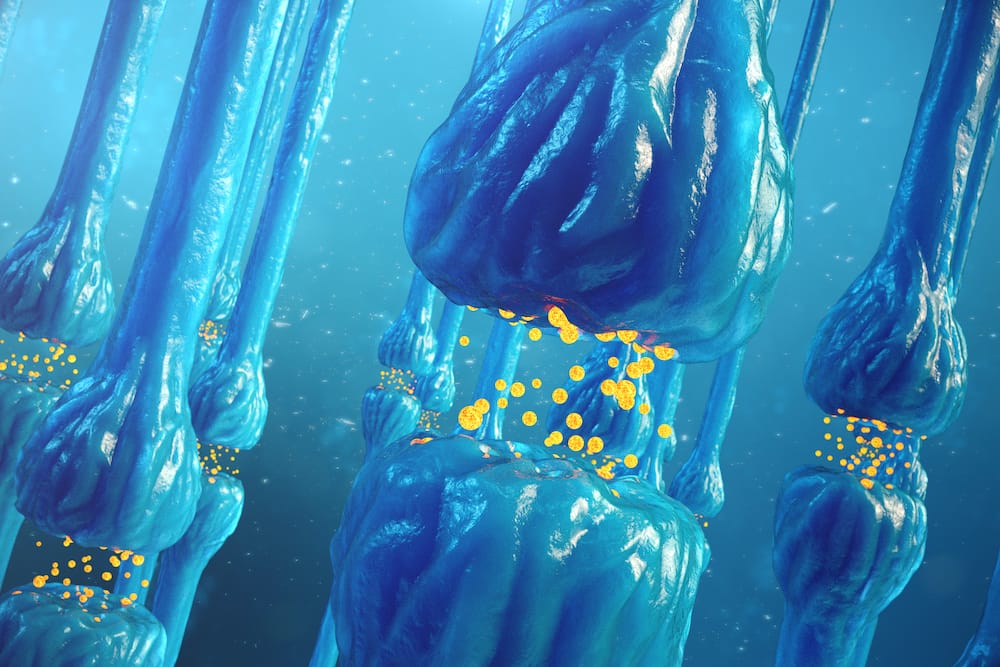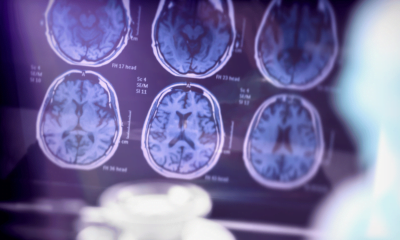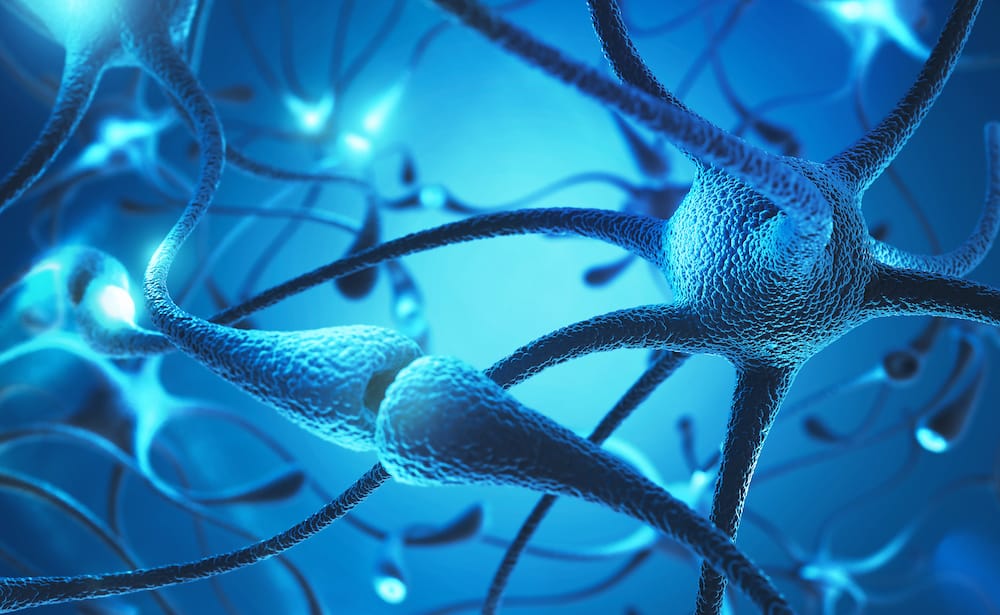That refreshing wake-up feeling. The rumble in your stomach. The stress-busting power of a deep breath. These momentary passages of everyday life are part of the body’s response to the myriad of molecular interactions going on internally, invisible to the human eye.
The complex cell-signalling endocannabinoid system encapsulates these very interactions, mediating multiple processes at work in your body right now – from the immune response to metabolism (the chemical reactions of life).
The endocannabinoid system is comprised of three major components; the endocannabinoids themselves, the enzymes which break down endocannabinoids and receptors – all interacting in a network of neural pathways and cells.
It is believed that the endocannabinoid system has a crucial role in “essentially all human disease.”
The compound cannabidiol or ‘CBD’ (derived from the cannabis plant) has an interesting part to play in the system, with therapeutic potential for a variety of neurological disorders.
Endocannabinoids are molecules synthesised in the body (endo meaning ‘in’). Their aim is to bind to specific cell-surface receptors and exert a range of physiological effects in the body. For example, stimulating that familiar growl of hunger.
The major endocannabinoids which have been characterised in-depth are anandamide and 2-arachidonoylglyerol (2-AG).
THC is the psychoactive substance in cannabis plants. Cannabidiol (CBD), first synthesised in 1965, can be perceived as THC’s sensible older sibling. While you might not think it is quite as exciting as THC in its effects, I hope to change your mind.
In fact, the cannabis plant has over 60 cannabinoids which are similar to endocannabinoids such as 2-AG. Both CBD and 2-AG are neurotransmitters – chemical messengers which transmit a signal to a key target cell in order to elucidate an effect. Although the exact number is unknown, there are over 200 neurotransmitters in the human body.
The principle purpose of a neurotransmitter is to activate its target receptor. The resulting physiological effect depends on the chemistry of the receptor itself and the specific biochemical pathways involved.
For instance, the neurotransmitter serotonin (also known as the ‘happy’ chemical) binds to 5-hydroxytryptamine (5-HT) receptors, thus regulating a number of processes including memory and learning and muscle contraction.
How exactly does a neurotransmitter such as serotonin reach its target receptor? How does neurotransmission of CBD work after ingestion? To understand this a little more, we will need to dive down to the level of the cell itself…
Cells in the human body come in an array of shapes and sizes and have various components, from the control-centre (the nucleus) to the protein-making machines (known as ribosomes) to the cell surface membrane, which is decorated with receptors. The gaps between cells are known as synapses. Those synapses which use chemical messengers are called chemical synapses.
A neuron is a vital cell of the nervous system, with the ability to transmit information to other cells in order to bring about an effect.
Imagine you are standing on the surface of a neuron cell body – the portion of the neuron which contains its nucleus. Stretching before you is a longer extension of the neuron, the axon.
If you gaze into the distance, you can see that this axon starts to divide into a multitude of branches. These are the axon terminals.
Curious, you walk down the axon until you stand right at the end of one of these vast branches.
Do you dare to peer down into the void, the synaptic cleft? The neuron on which you stand is ‘presynaptic’ (situated before the synapse). Towering before you is a portion of a gate-like protein (called a voltage-gated calcium channel) with the remainder embedded in the cell surface membrane below you.
You notice that there are more of these gate-like proteins along the other edges of your axon terminal (and all over the axon terminals adjacent to yours). If you look through this voltage-gated calcium channel and across the gap, you can just make out the postsynaptic neuron.
Suddenly, you feel a trembling in the cell beneath you and turn around to see the surface of the long axon behind you rippling, with the rippling coming closer by the second! You hold on to the side of the calcium channel to brace yourself as this rippling reaches the surface below your feet.
Remember the ‘information’ that neurons transmit? This information is an ‘action potential’ or ‘nerve impulse’ (imagined as the ‘rippling’ depicted here) – an electrical signal which will stimulate the calcium channel. In turn, this will enable positively charged atoms known as calcium ions to flow into the neuron.
Fascinated, you watch the channel’s shape shift and alter, clinging on to its side as the influx of calcium ions passes you. There is another trembling in the cell membrane below you and you lie flat, looking over the edge of the axon terminal.
Because of the influx of calcium, sphere-like portions of the membrane – called vesicles – can now release small molecules into the synaptic cleft directly beneath you. These small molecules are neurotransmitters – perhaps serotonin.
You watch as the molecules diffuse across the synapse and bind to receptors dotted along the surface of the postsynaptic neuron. In binding to these receptors, the neurotransmitters are able to stimulate another nerve pulse down the postsynaptic neuron.

Synaptic transmission in the human nervous system.
Now you know how neurotransmitters normally travel between neurons, it will be easier to understand how our particular group of neurotransmitters – the endocannabinoids like 2-AG of the endocannabinoid system (or cannabinoids like CBD) – do so. The way in which endocannabinoids reach their target receptor occurs in a backwards manner, through retrograde signalling.
Indeed, the activation of a postsynaptic neuron by a nerve impulse stimulates endocannabinoids to diffuse across the synaptic cleft to bind to receptors of the presynaptic cells. The receptors bound by anandamide or 2-AG bind are the cannabinoid receptors.
Specifically, these are cannabinoid receptors 1 and 2 (CB1 and CB2), which were first discovered in the nineties. While CB1 is situated abundantly in the Central Nervous System (CNS), CB2 is expressed much more in both the Immune and Peripheral Nervous Systems.
The activation of these two receptors by endocannabinoids has numerous implications for cellular physiology (the activities in the cell which keep it functioning) or cell motility, to name only a couple.
In the last three decades, the endocannabinoid system has been the most studied retrograde system of neurotransmission, with plentiful facets of research seeking to unravel the sheer complexity of the overall system.
While we know the system has implications for multiple physiological processes – from mood regulation to neuroprotection – there is a vast number of unknowns in this area. For instance, although there is a whole collection of evidence presenting the components of the endocannabinoid system as anti-cancer targets, the complex interplay of this system with other biological pathways makes progress challenging, with rigorous testing required.
CBD has been shown to possess anxiolytic (ability to reduce anxiety) antipsychotic (for management of psychosis) and neuroprotective (aiding preservation of neuronal integrity) properties, with the potential to treat several health conditions such as schizophrenia, depression or Parkinson’s.
There is a need for further controlled clinical research on the use of CBD in these areas and its role as an adjunct therapy – given in addition to an existing therapy for a condition such as epilepsy in order to increase effectiveness.
Interestingly, CBD binds to neither CB1 nor CB2 receptors – it is thought that it may instead interact with a receptor not yet discovered! Additionally, it has been proposed that CBD could alter how endocannabinoids interact with CB1/2.
As you read this, research scientists are peering into the synaptic cleft – the void of the unknown – to elucidate the therapeutic potential of the endocannabinoid system and compounds like cannabidiol.
Perhaps next time you feel that niggling rumble of hunger, your thoughts will wonder down to the unseen world of the cell – to the tiny neurotransmitters whizzing across those synaptic clefts in a series of complex biological interactions which might just tell you that it’s time for lunch.

 News6 months ago
News6 months ago
 News6 months ago
News6 months ago
 News6 months ago
News6 months ago
 Science5 months ago
Science5 months ago
 Industry5 months ago
Industry5 months ago
 News6 months ago
News6 months ago
 Medical cannabis6 months ago
Medical cannabis6 months ago
 News5 months ago
News5 months ago













